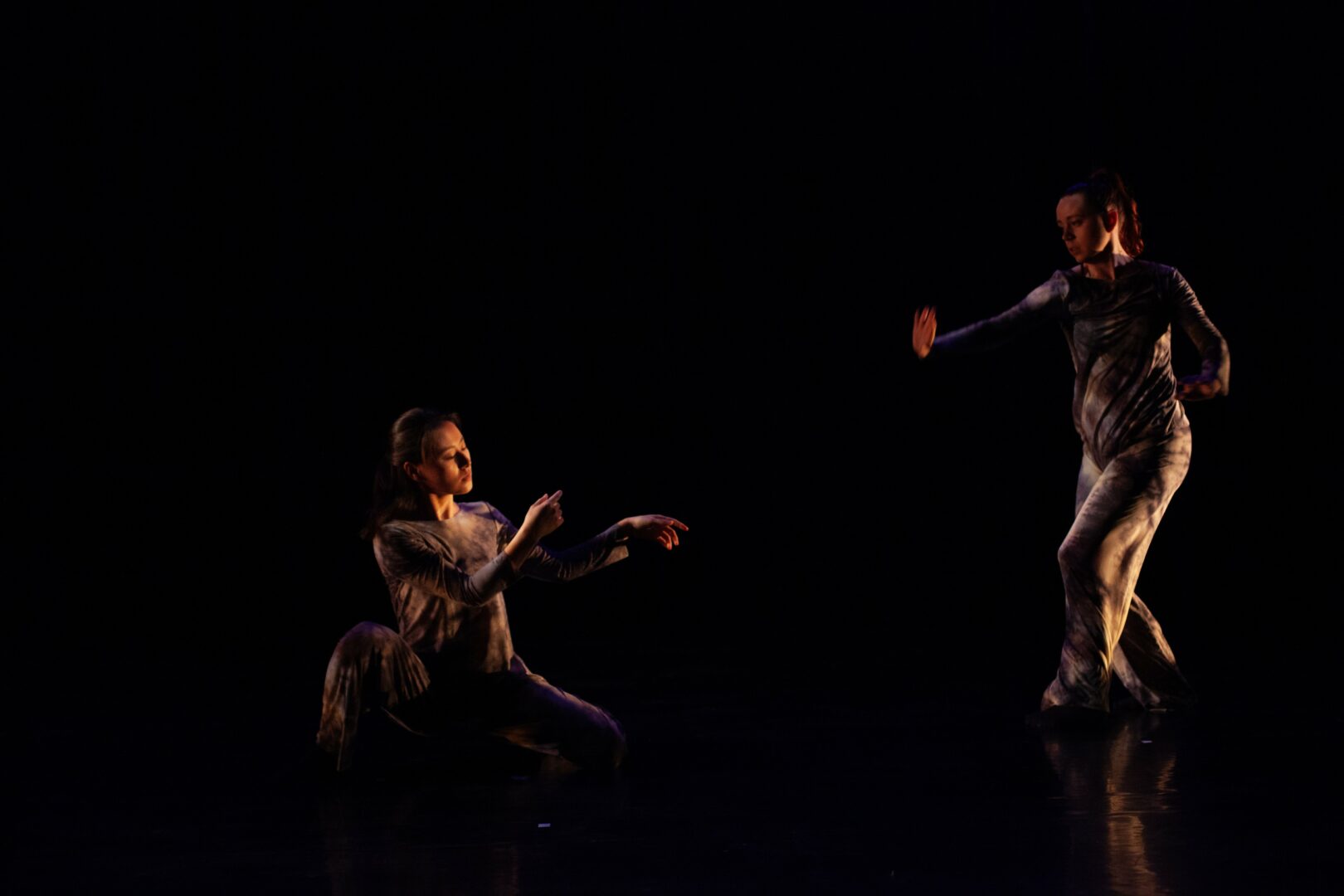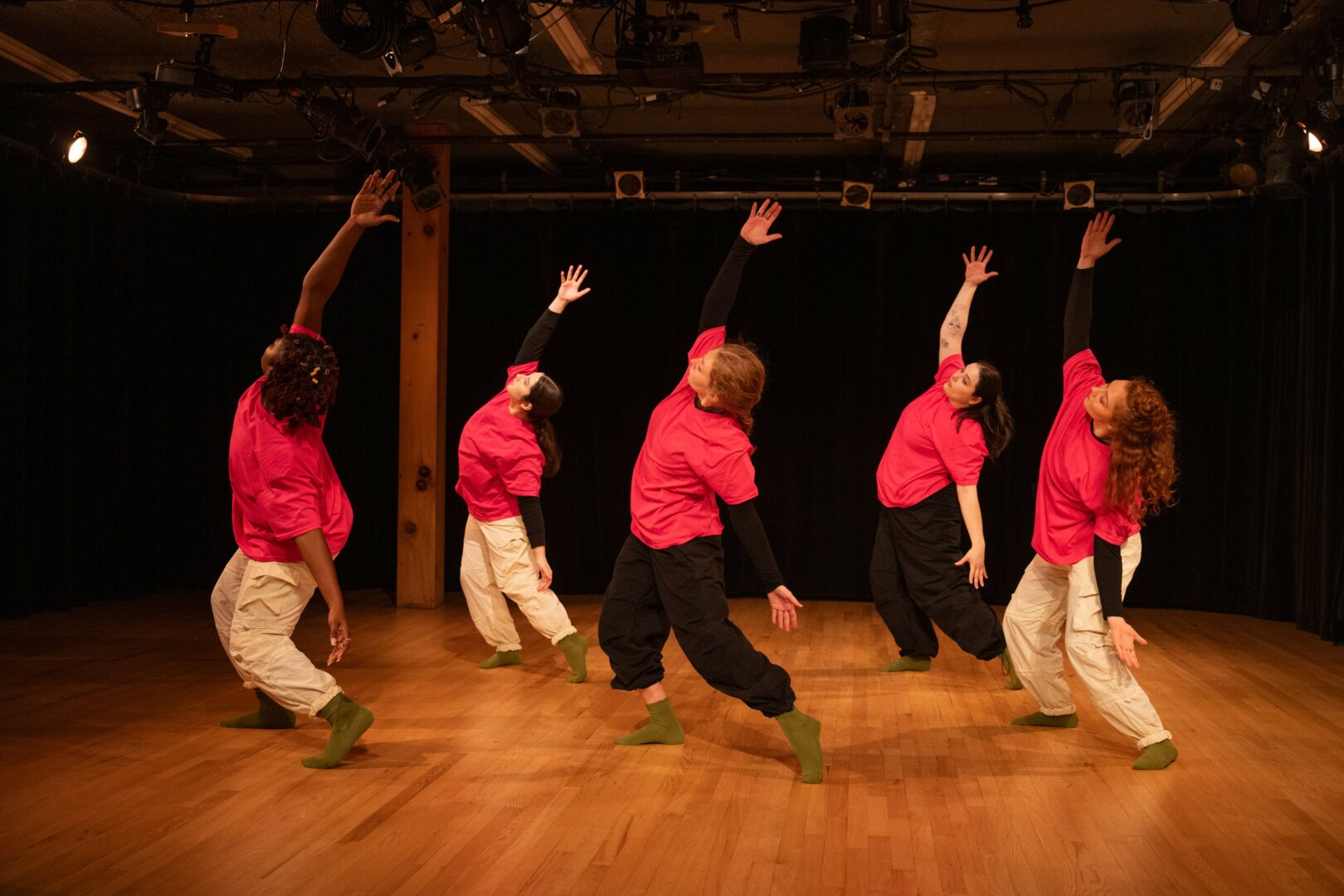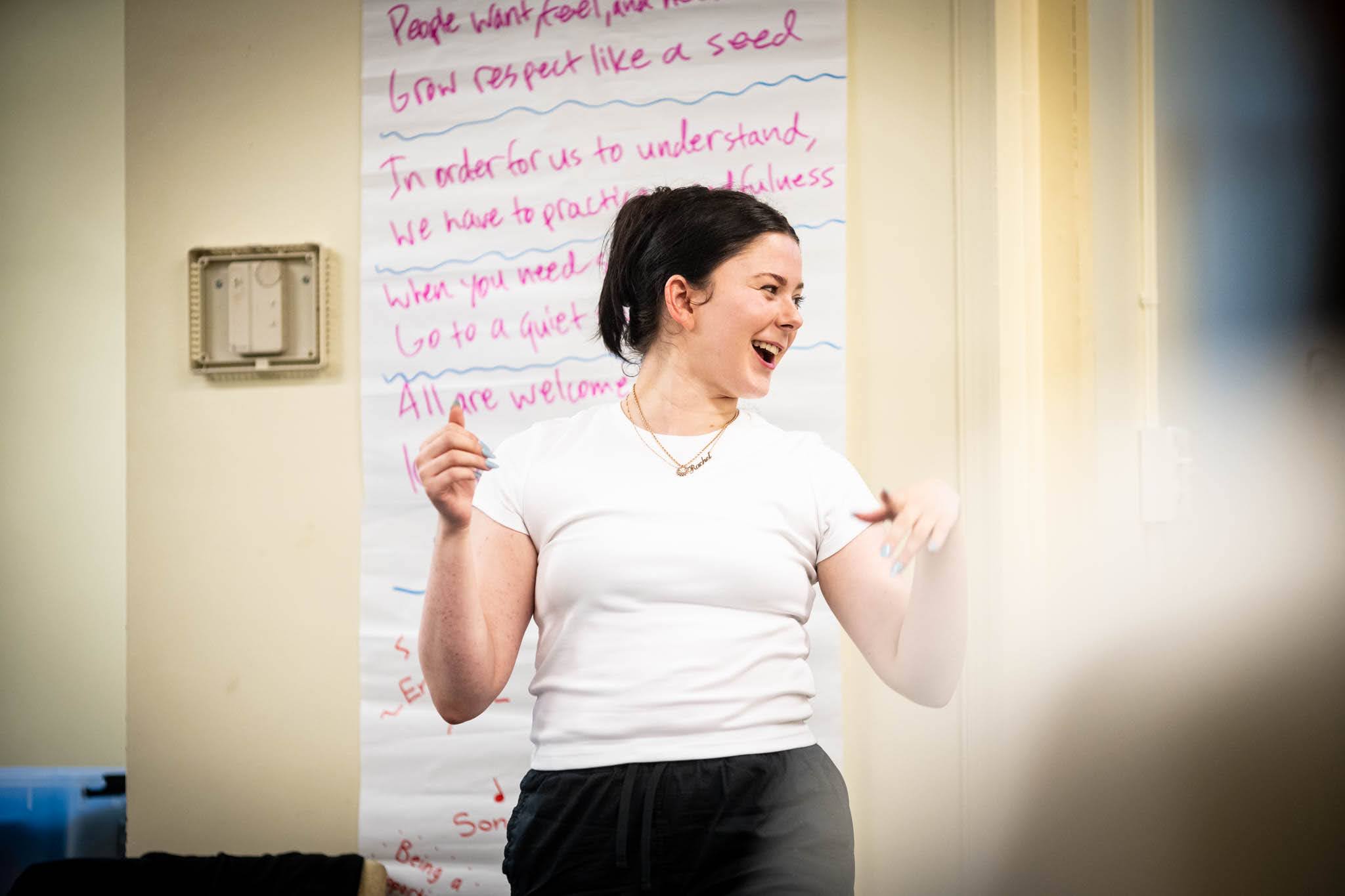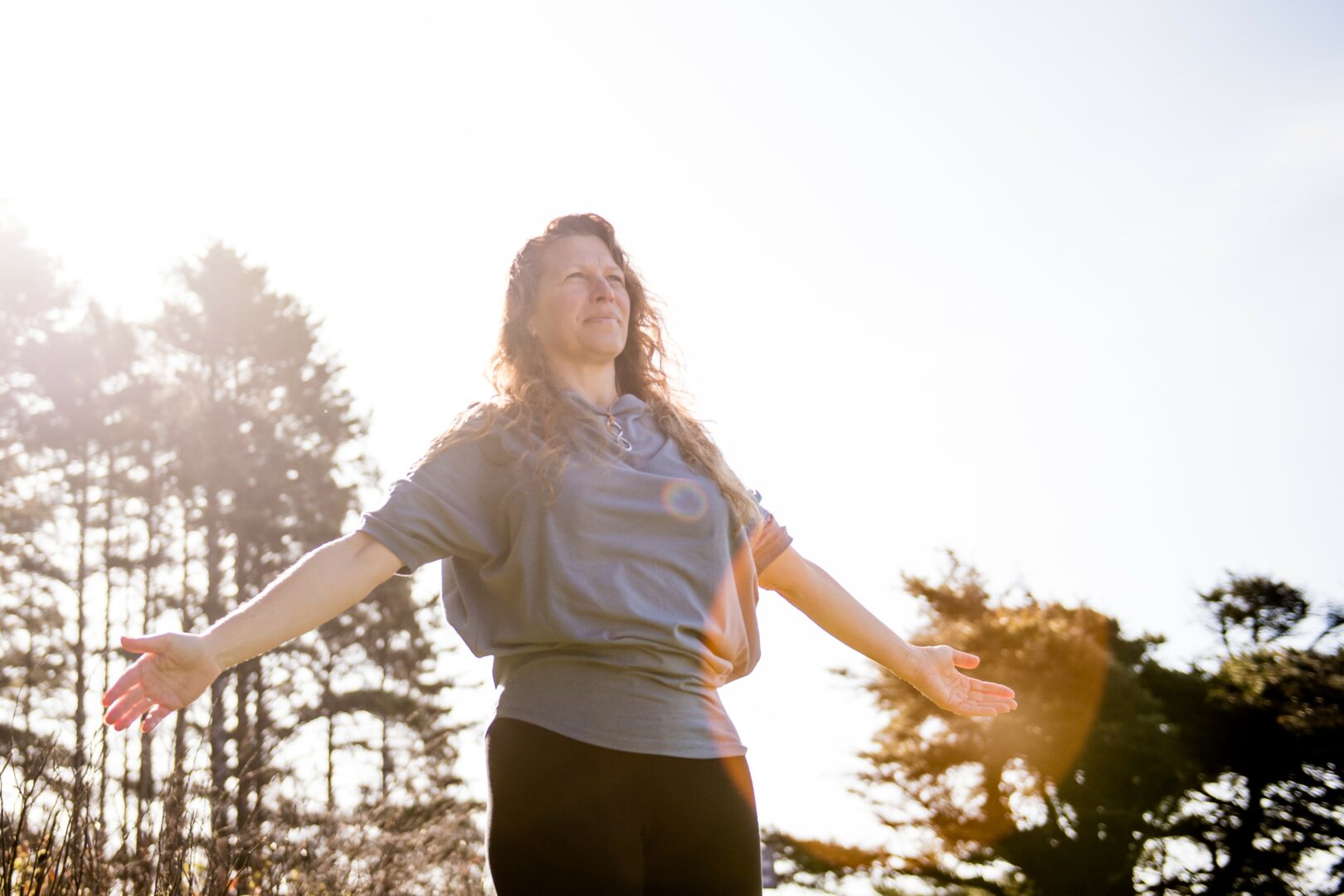We recently had the chance to connect with Rachel Repinz and have shared our conversation below.
Good morning Rachel, we’re so happy to have you here with us and we’d love to explore your story and how you think about life and legacy and so much more. So let’s start with a question we often ask: What are you being called to do now, that you may have been afraid of before?
Right now, I’m really trying to stick with a process, giving myself time to really dig into it and get messy. When I was younger and first finding my identity as an artist (and person), I would often work on one choreographic project, present it, then move on to the next. I had a lot of little chunks of work that felt like a collage of vastly different moments, feelings, and experiences, but nothing that really “sat” together as a larger body of work.
After my grandmother died in late 2021, I started to feel called to more deeply investigate one singular idea and feel how one idea could continue to grow, and grow, and grow. Since then, I’ve been making choreographic studies and works that all live in the same “world” together. It’s exciting to feel how different each study can be while still circling the central question of: how do we (collectively and individually) experience girlhood?
This is the longest I’ve worked on a singular project, and it’s been exciting to witness it grow and change over time.
Can you briefly introduce yourself and share what makes you or your brand unique?
I’m Rachel DeForrest Repinz, a dance artist, scholar, and lover based in Brooklyn, NY. I have my hands busy in a few different pots, including writing, researching, performing, and choreographing.
I devise dance-theater performance works with a group of collaborators as RACHEL:dancers (spoken as Rachel and Dancers). My work with RACHEL:dancers is committed to advancing a disability aesthetic in contemporary concert and postmodern dance, and exploring ways to cultivate access for visually impaired audiences and artists through an access-based creative process. We challenge the notion that dance is an ocularcentric art form.
We recently shared a new work at Movement Research at Judson Memorial Church in April 2025, which was an absolute dream come true for me. As someone who continues to be so inspired by the postmodern dance lineage, being at Judson just felt like magic.
I also co-direct Bashi Arts with Enya-Kalia Jordan, which is a Black and Disabled led organization in South Brooklyn implementing and developing dance-based programming that advances accessibility, affordability, and experimental approaches to contemporary dancemaking for and with South Brooklyn artists of all ages.
I’m working on my PhD in Dance at Texas Woman’s University, where my research focus is on the presence of blindness in contemporary dance, and I am also involved in numerous other dance organizations as a writer and administrator.
Amazing, so let’s take a moment to go back in time. Who saw you clearly before you could see yourself?
All of my dance educators, teachers, and mentors have poured so much into me, before I even realized I was worth pouring into. I would not have the career or care for the field that I do without them. They have not only given me the professional skills I needed to be a performer and educator, but also the everyday skills to know how to show up authentically and advocate for myself and others; the skills to actually make this passion into a sustainable career.
Was there ever a time you almost gave up?
I think it’s very easy to give up on trying to have a sustainable, successful, career in the arts. The idea of the starving artist is instilled in you from such a young age: “How will you ever make money doing that?” and “Okay, but what is your backup plan?” are still questions I encounter despite having worked professionally in the field of dance for a decade! Especially with the current changes in the political and economic landscape, with the resignation of the entire dance staff at the National Endowment for the Arts and the slashing of major grant funding programs for dance at a federal and state level, it can feel like our limited resources as a field are becoming nearly non-existent. But I often think about what my friend and colleague maura nguyễn donohue always says: “dance is a weed.” Dance defies circumstance. It persists, even when it has to push its way through the smallest of cracks. Dance is resilient, and powerful, and human, and eternal.
I think our readers would appreciate hearing more about your values and what you think matters in life and career, etc. So our next question is along those lines. What’s a belief you used to hold tightly but now think was naive or wrong?
I used to be much more caught up in how dance exists in relation to other things. Like, how dance can support literacy or mathematical learning, or how it can be used for social and political change. All of these things are important, don’t get me wrong, but now I’m much less concerned about how dance does something for something else, and instead I’m interested in dance in its own right. It’s taken a weight off my shoulders to not feel as worried about how to justify what I’m doing, and instead just focus on doing the thing. Dance IS important – full stop. It doesn’t need to justify itself as consequential to, or supportive of, something else to be considered important. Once I dropped the concern about what dance is “doing,” I actually found it easier to identify what it does.
Okay, we’ve made it essentially to the end. One last question before you go. What are you doing today that won’t pay off for 7–10 years?
Everything! I always think about the saying, “the day you plant the seed is not the day you eat the fruit.” It might not be exactly 7-10 years, but the moment you begin something is rarely the same moment it pays off. Even if there is an element of immediate gratification, the way you understand how something has impacted all of the other elements of your work and life only becomes clearer over time.
Co-founding Bashi Arts is one of my current projects that is a testament to this. Even the earliest stages, like filing paperwork, scouting board members, and developing a business plan, take YEARS — and that’s before you even get to do the work you set out to do! It can be hard to feel the light at the end of the bureaucratic tunnel sometimes, but having incredible colleagues to do it alongside has made it that much easier.
On a bit of a smaller scale, I was recently invited to bring back a work I choreographed in 2023/2024, “If I Could Just Reach Out and Touch It,” which is part of the larger project I’m working on about girlhood. I’m really excited to return to this work after a year or two away to rediscover new parts of it. Since we originally devised the work, I’ve created and presented other works that will inform the way I continue to stretch and develop this specific piece. It’s exciting to see how time can continue to shape and re-shape things, even after they’ve been “finished.” We’ll be sharing the new version of this work as part of the RE/VENUE project at Mark Morris Dance Center in Brooklyn, NY, on October 26th at 4:30 PM.
Contact Info:
- Instagram: https://instagram.com/rachelanddancers
- Linkedin: https://linkedin.com/in/rachel-repinz/
- Other: https://bashiarts.org





Image Credits
Photos by Rachel Keane, Nir Arieli, Stewart Villio, and Brian Mengini.
so if you or someone you know deserves recognition please let us know here.




